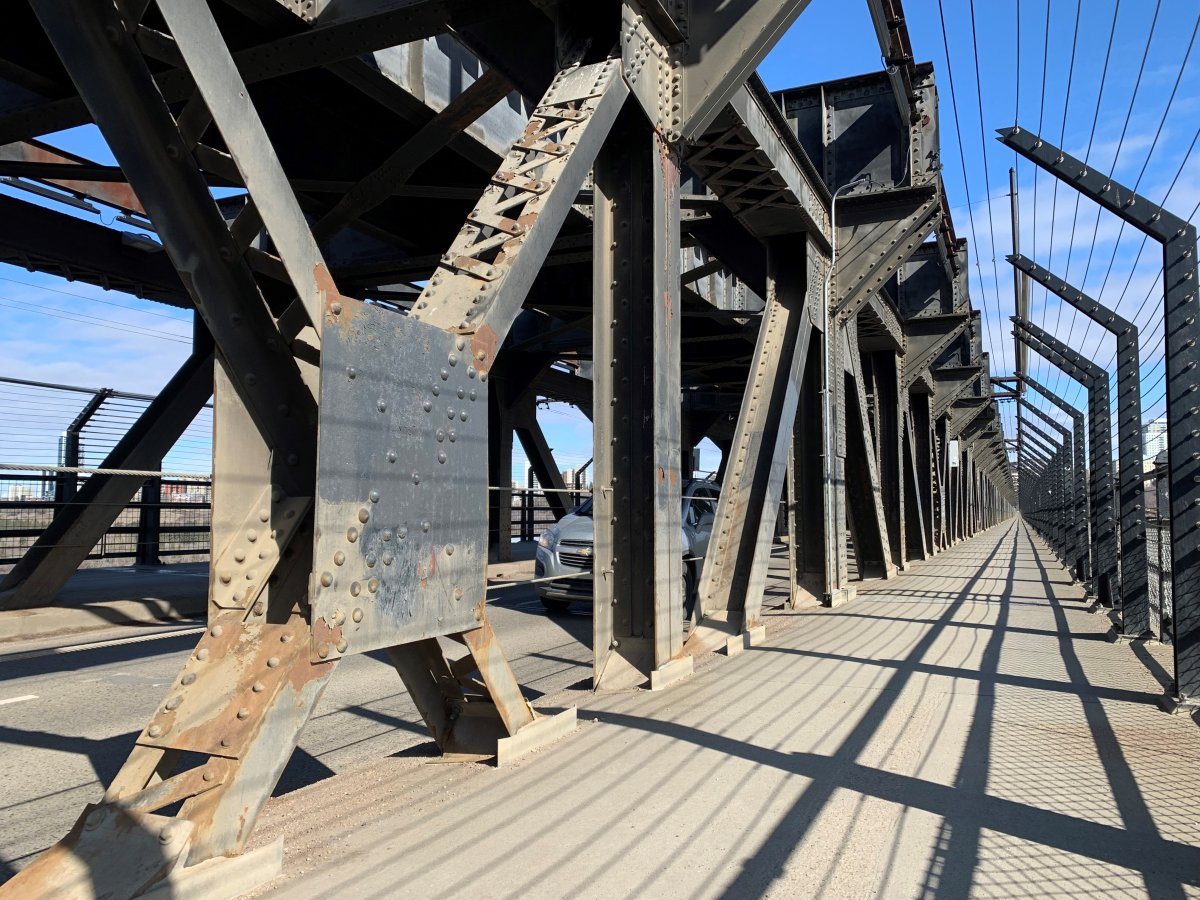The High Level Bridge is scheduled for renewal in the next few years, and city administration has outlined a number of rehabilitation options ranging from the bare minimum to building a brand new bridge.

One of Edmonton’s most iconic and historic structures, the High Level Bridge was constructed by the Canadian Pacific Railway Company between 1910 and 1913. Ownership of the structure was transferred to the City of Edmonton in 1994. The last major rehabilitation took place in 1995.
“It was built 100 years ago for very different types of vehicles and circulation,” said Pascale Ladouceur, branch manager of infrastructure and design with the City of Edmonton’s integrated services department.
The bridge, which connects downtown with Old Strathcona, is scheduled for renewal beginning in the 2023-2026 budget cycle.
“The condition information that we have has shown that the bridge has deteriorated to a certain threshold where interventions are a bit more significant than what we had done in the past,” Ladouceur said.
“We are expecting some fairly significant work on the structure itself, on the bridge decks where the vehicles circulate — that’s all part of the regular maintenance investment into maintaining the bridge in good condition.
“It’s not necessarily urgent repairs as much as we want to be proactive and do the repairs and the rehabilitation work before it becomes as issue.”
- Trudeau says ‘good luck’ to Saskatchewan premier in carbon price spat
- Canadians more likely to eat food past best-before date. What are the risks?
- Hundreds mourn 16-year-old Halifax homicide victim: ‘The youth are feeling it’
- On the ‘frontline’: Toronto-area residents hiring security firms to fight auto theft
In a report going to executive committee later this month, administration details several scenarios with a range of options for the bridge rehabilitation.
Scenarios A (A1, A2 and A3) would see the city do only critical rehabilitation work on the bridge, or the minimum work required to extend the life of the High Level for another 15 years. This option would defer major rehabilitation. Due to the impacts of several closures of the bridge, high cost and nominal benefits, administration did not carry forward this option for further analysis.
Scenarios B (B1, B2 and B3) look at the primary rehabilitation improvements needed to enable the bridge to serve current transportation uses for about 25 years. This work includes rehabilitation of the roadway deck, reestablishing a protective coating on the steel, repairs to concrete foundations and replacement of the components not repaired during the 1995 rehabilitation.
Scenarios C (C1 and C2) detail options to either construct a new bridge that takes on a simpler form to the west of the existing High Level Bridge, or demolish the current bridge and construct a new one in the same location.

Administration said a detailed evaluation was conducted taking into consideration the benefits and trade-offs with each scenario, including how each scenario accommodates current and future mobility needs. The province of Alberta has a long-term vision of using the High Level Bridge to run regional rail connecting Edmonton and Calgary. The current High Level Bridge does not have the structural integrity to accommodate the load capacity required for regional rail, according to the report.
Administration also evaluated both capital and lifecycle costs for each option. The lifecycle costs were calculated over a 75-year timeframe.
Based on its analysis, administration is proceeding with the planning and design phase for Scenario B2, which would focus on rehabilitation work, while also improving active transportation. This scenario specifically considers the vision of the High Level Line, a community-led project that imagines a 4.3-kilometre long linear park between Oliver and Old Strathcona, using top deck of the High Level Bridge to connect the two sides.
This option would also see shared-use paths on the upper deck, widening of the lower east deck sidewalk, rehabilitation of the north and south approaches of the upper deck and maintenance of the streetcar track and provisions of the safety barriers.
“The rehabilitation works combined with active mode enhancements on the upper deck would keep the bridge operational for up to 25 years until the next rehabilitation is required, while also providing immediate improvements to active mode connections between Downtown and Whyte Avenue,” reads the report.
The next step in the bridge rehabilitation is to start planning, which will include public consultation.
“We will be talking to the neighbouring communities, the users of the bridge. We have identified key community groups that we will be talking to, such as the operators of the streetcar… High Level Line Society,” Ladouceur said.
Ladouceur said construction is expected to start near the end of the 2023-2026 budget cycle.
The city said at the strategy level, the High Level Bridge rehabilitation project is anticipated to cost in the range of $135 to $270 million from planning through delivery.
The report will be presented to the city’s executive committee on April 13.





Comments